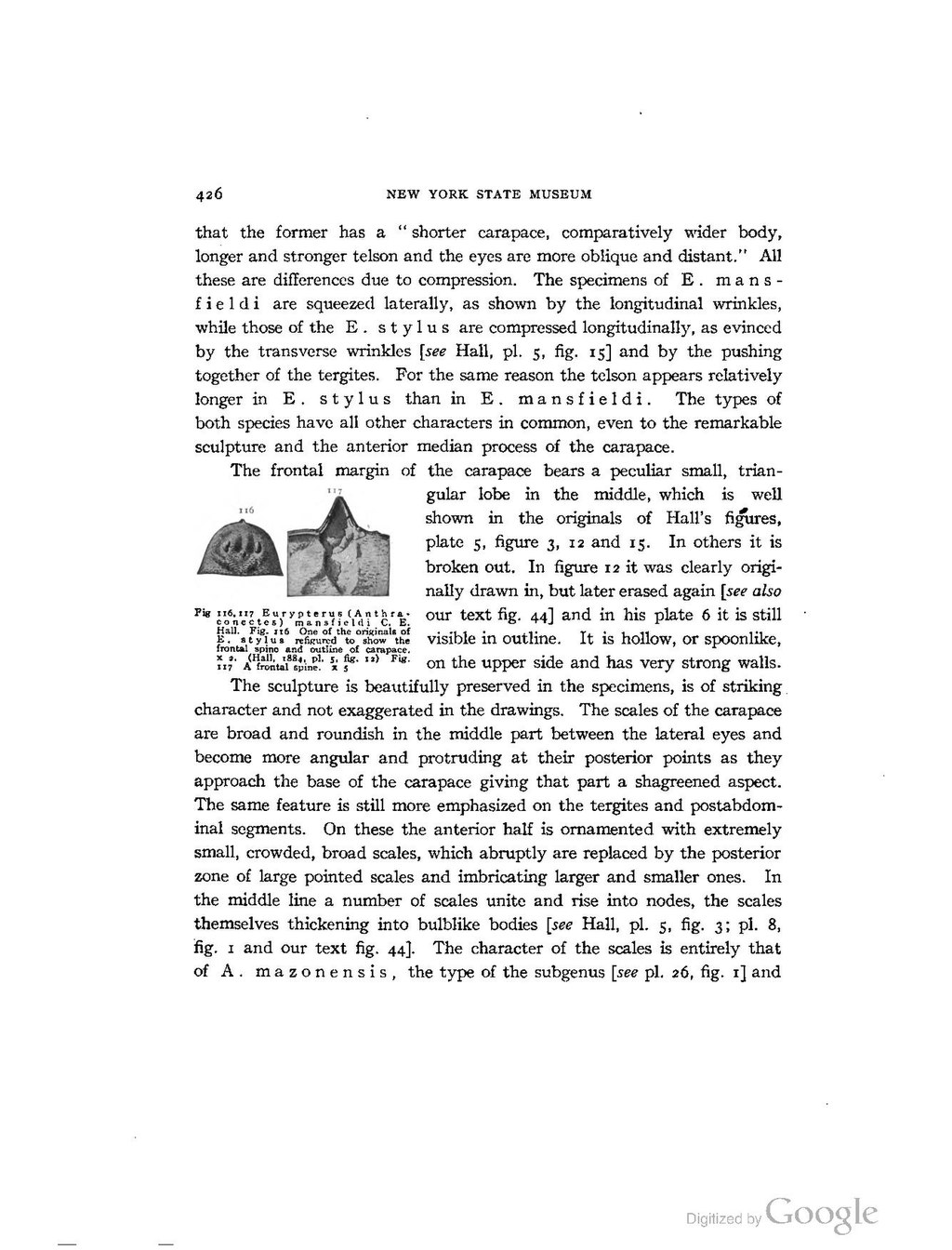that the former has a "shorter carapace, comparatively wider body, longer and stronger telson and the eyes are more oblique and distant." All these are differences due to compression. The specimens of E. mansfieldi are squeezed laterally, as shown by the longitudinal wrinkles, while those of the E. stylus are compressed longitudinally, as evinced by the transverse wrinkles [see Hall, pl. 5, fig. 15] and by the pushing together of the tergites. For the same reason the telson appears relatively longer in E. stylus than in E. mansfieldi. The types of both species have all other characters in common, even to the remarkable sculpture and the anterior median process of the carapace.

Fig 116, 117 Eurypterus (Anthraconectes) mansfieldi C. E. Hall. Fig. 116 One of the originals of E. stylus refigured to show the frontal spine and outline of carapace. × 2. (Hall, 1884, pl. 5, fig. 12) Fig. 117 A frontal spine. × 5
The frontal margin of the carapace bears a peculiar small, triangular lobe in the middle, which is well shown in the originals of Hall's figures, plate 5, figure 3, 12 and 15. In others it is broken out. In figure 12 it was clearly originally drawn in, but later erased again [see also our text fig. 44] and in his plate 6 it is still visible in outline. It is hollow, or spoonlike, on the upper side and has very strong walls.
The sculpture is beautifully preserved in the specimens, is of striking character and not exaggerated in the drawings. The scales of the carapace are broad and roundish in the middle part between the lateral eyes and become more angular and protruding at their posterior points as they approach the base of the carapace giving that part a shagreened aspect. The same feature is still more emphasized on the tergites and postabdominal segments. On these the anterior half is ornamented with extremely small, crowded, broad scales, which abruptly are replaced by the posterior zone of large pointed scales and imbricating larger and smaller ones. In the middle line a number of scales unite and rise into nodes, the scales themselves thickening into bulblike bodies [see Hall, pl. 5, fig. 3; pl. 8, fig. 1 and our text fig. 44]. The character of the scales is entirely that of A. mazonensis, the type of the subgenus [see pl. 26, fig. 1] and
